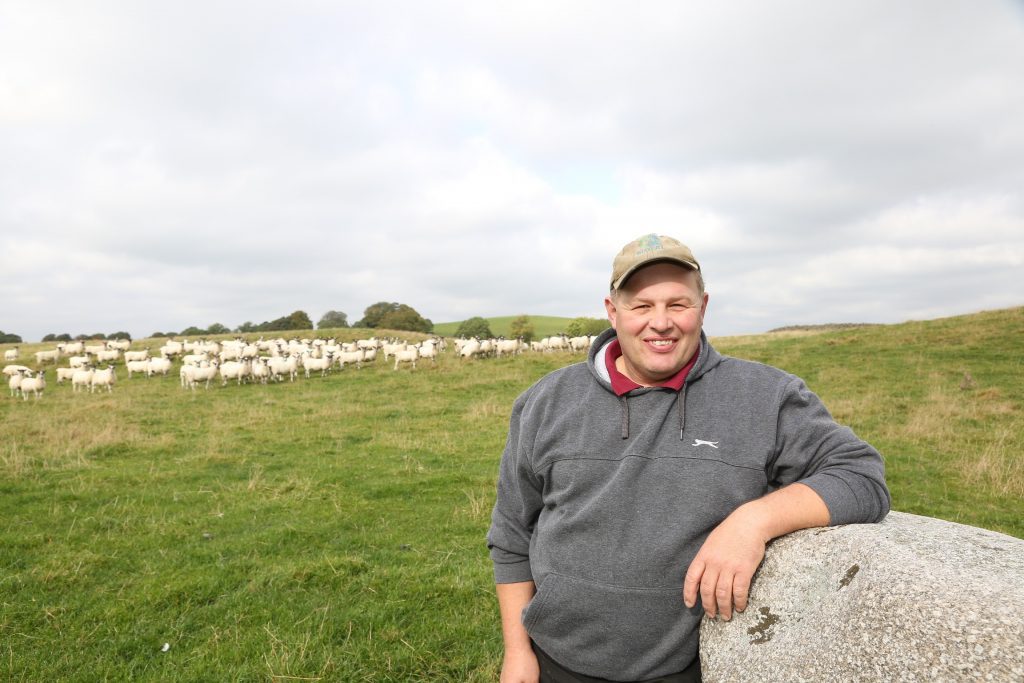Wigtownshire farmer Kenny Adams is looking forward to opening the doors of his farm on Wednesday 11 November and sharing with local farmers how his business has continued to progress following his time as a monitor farmer.
This event is the first in a series of five monitor farm legacy events to be held in November and December, organised by Quality Meat Scotland (QMS). A series of open meetings will be held on former monitor farms in Wigtownshire, Bute, Forres, Lonmay and Tain.
Mr Adams and his wife Marianne were QMS monitor farmers from 2007 to 2010. During that time, their farm business came under the scrutiny of a community group of local farmers run by facilitators Seamus Donnelly and David Keiley from SAC Consulting, a division of Scotland’s Rural College (SRUC).
Mr Adams said: “One of the best things to come out of the experience was the many friends we made. There was so much to learn from other farmers, young and old, who were dealing with similar issues as we were at the time.”
One of the main aims of the project was to reduce variable cost expenditure for this typical south-west Scotland family beef and sheep unit. Over the three years, variable costs fluctuated quite dramatically due to unstable feed and fertiliser costs and also due to increased medicine bills to combat health problems in the sheep flock. However, gross output improved year on year and variable costs as a percentage of gross output reduced from a high of 54% to 45%, while net profits also improved from 3% to 20%.
Mr Adams has continued to work on his variable costs with the aim of getting them down to less than 40% of gross output. He believes he is nearly there as a result of making management decisions based on analysing the accounts every month with Marianne. An example of this has been outwintering cows to reduce winter feed and bedding costs.
The 130 cows at Torhousekie are split into spring and autumn calving to ease the workload in the spring and Mr Adams buys Charolais bulls with good EBVs for ease of calving and growth in order to maintain a good ratio of kilos of beef produced per hectare.
The Adams’ 500 Scotch Mule ewes are crossed with a Texel or Beltex and perform well. “I don’t flush the ewes because I don’t want too many triplets and usually achieve a lambing percentage of 190 to 200%. They lamb outside in April and the first lambs are finished off grass by the beginning of July,” said Mr Adams.
One of the biggest savings the Adams have been able to make on the farm has been in no longer using fertiliser of any kind on the grazing ground and a reduced rate on the silage fields. They achieve good clover content in the grass by feeding clover seeds mixed with barley to the cows and he soil tests regularly to check pH and nutrient levels.
“I have learned from the project to look at costs and to keep things simple, and I have the confidence to put my ideas into practice. Some work and some don’t, but we have been fairly ruthless when it comes to cutting costs,” said Mr Adams.
The event on Wednesday 11th November at Torhousekie Farm will begin at 11am and is open to all and free to attend. The meeting will then move on to the County Buildings in Wigtown for lunch and presentations.
The details of all the monitor farm legacy events being held are below:
Wednesday 11 November: Kenny Adams hosts at Torhousekie Farm, Wigtown, DG8 9BJ
Thursday 26 November: Janet and Brian Hill host at Plan Farm, Kingarth, Isle of Bute, PA20 9LX
Thursday 3 December: Robert and Ian Chapman host at Tophead Farm, Lonmay, AB43 8UY
Wednesday 9 December: Robbie and Kirsty Newlands host at Cluny Farm, Rafford, Forres, IV36 2SJ
Thursday 10 December: The Scott family hosts at Fearn Farm, Tain, IV20 1TL
For further information about this and the other planned monitor farm legacy events and to register your place visit please visit www.qmscotland.co.uk/events





